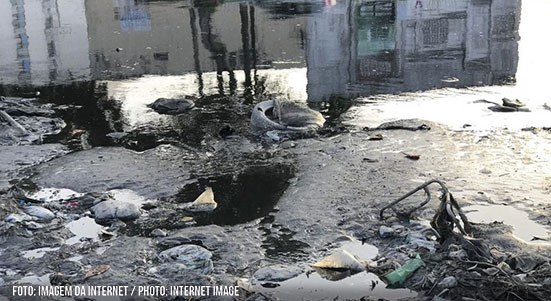
New Discovery Opens Path for Schistosomiasis Vaccine
In animal tests, antibodies generated in the first infection recognize the parasite causing the disease faster and accelerate cure in cases of reinfection
09/11/2021
Schistosomiasis is a parasitic disease that annually affects more than 200 million people worldwide; currently, there is no vaccine available to prevent the disease.
Considered one of the 17 neglected tropical diseases (NTDs) in the world, schistosomiasis is still an important public health problem in Brazil. However, the only drug used in the treatment was discovered over 40 years ago. Now, an article published in late October in Nature Communications entitled “Rhesus macaques self-curing from a schistosome infection can display complete immunity to challenge” paves the way for the development of new therapies and even a vaccine against this parasitic disease that annually affects more than 200 million people in poor countries. In Brazil, it is present in 18 states and the Federal District, eight of which have endemic transmission (Alagoas, Bahia, Pernambuco, Rio Grande do Norte, Paraíba, Sergipe, Espírito Santo and Minas Gerais). According to data from the federal government, 1.5 million people live in areas at risk of contracting the disease. In the Northeast and Southeast regions, the occurrence is directly linked to the presence of transmitting mollusks. Between 2009 and 2019, the country registered 423,117 cases of schistosomiasis, according to the latest bulletin from the Ministry of Health released in March.
The research results showed that rhesus monkeys (Macaca mulatta) naturally have a strong immune response against schistosomiasis and, when they heal spontaneously, are able to generate powerful antibodies against parasites that promote self-healing after the first infection, and that act even faster on a second exposure to the parasites, making the monkeys protected from suffering a second infection.
For the study, Dr. Murilo Sena Amaral, researcher at the Parasitology Laboratory of Instituto Butantan and first author of the article, and Dr. Sergio Verjovski-Almeida, study coordinator, researcher at the Butantan Institute and professor at the University of São Paulo (USP), in collaboration with several other researchers, followed monkeys infected and reinfected with the parasite that causes the disease to understand whether the immune memory of monkeys worked after exposure to a second attempted infection. The goal was to use this knowledge as a basis for developing a possible vaccine. For this, 12 rhesus monkeys were infected, each with 700 Schistosoma mansoni parasites. All were observed to heal between the 12th and 17th weeks. After 42 weeks, researchers monitored the monkeys after a second infection.
They were then exposed to a reinfection by 700 cercariae and monitored for a further 20 weeks (up to 62 weeks after the initial infection). Blood was collected to estimate worm burden using circulating anode antigen (CAA) level, and to measure inflammatory markers and hematology. Feces were also analyzed to determine the number of eggs per gram. The parasites from the second infection were eliminated between the 2nd and 4th weeks after exposure, and did not actually develop or deposit eggs in the circulatory system. At the end, the monkeys were perfused in intestinal veins, and the actual worm load in each primate was analyzed. About 2 to 3 parasites were detected in just a few monkeys. In addition, the scientists performed in vitro assays with plasma containing monkey antibodies and incubated with young parasites, resulting in their death.
By monitoring the levels in the bloodstream of the antigen derived from the parasite, researchers found that from the 10th week on, a primary infection established with Schistosoma mansoni is eliminated, generating resistance to reinfection. Antibody profiles suggest that the antigen-mediating protection is the products released from the development of schistosomes. In culture, they are killed by adding monkey plasma, collected from the 8th week after infection, and even more efficiently with reinfection plasma. Furthermore, cultivated schistosomes lose chromatin activation marks and show decreased expression of genes related to lysosomes involved in autophagy.
Now, the researchers plan to identify the parasites proteins that are targeted by monkey antibodies to be tested as possible vaccine candidates in mice.
About schistosomiasis
Schistosomiasis is a common tropical disease in Brazil. Every year, about 200 million people are affected worldwide and more than 200 thousand die annually from the disease. The parasites infect people who come into contact with contaminated water and settle inside the blood vessels of the intestine and liver, where deposited eggs accumulate. Initially it is asymptomatic, but capable of evolving and causing serious chronic health problems, which may lead to hospitalization or death. Contamination usually occurs in contact with fresh water where there are snails infected by the worms. When the worms reach a persons body, they start laying eggs and living in the bodys tissues. Symptoms include fever, headache, chills, weakness, muscle pain, cough, diarrhea among others. The drug recommended by the World Health Organization (WHO) is Praziquantel, which is ineffective against young forms of the parasite and does not prevent reinfection.










